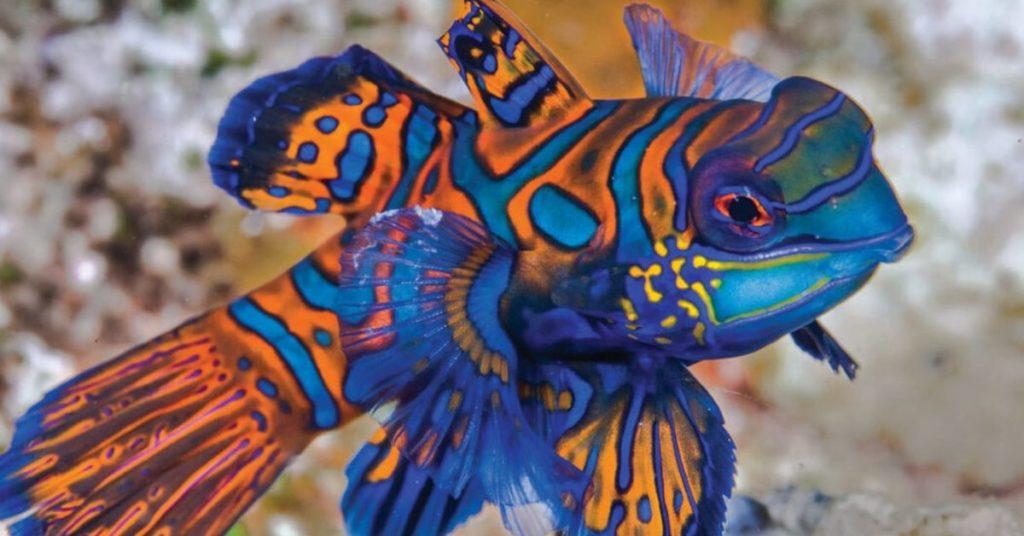Looking at a mandarinfish (Synchiropus splendidus) is like witnessing a prismatic explosion in piscine form. A popular pet for fish enthusiasts, this saltwater swimmer grows only slightly larger than a shot glass. It lives in various coral reefs and lagoons in the Philippines and throughout the Pacific, “walking” on undersea surfaces with its pelvic fins. The captivating hues all over this fish’s body hide a secret in plain sight, though: It has no scales. Fortunately, the mandarinfish makes up for this with some interesting defensive features: spines, slime, and stink.
Underneath the mandarinfish’s colorful skin are two kinds of secretary cells. One generates the toxin, while the other creates its thick mucus covering. Its poison protects it from other animals, while its slime, which is said to be particularly noxious, safeguards it from diseases and other perils within its environment. It’s also believed that their bright coloration could be aposematic—essentially, a warning to predators that it’s a bad idea to eat them—or attractive to potential mates.
Smelly slime isn’t the only thing the mandarinfish produces, though. The colors we see in many species are often the result of their diet. Plants would rather absorb energy-rich blue light than reflect it, though, which is why most of them don’t produce the pigment that would turn the animals that eat them blue. Thus, blue is a rarity in nature; most blue animals are actually just equipped with epidermal structures that scatter blue light. However, the mandarinfish is one of the few animals capable of creating its own blue coloring—a “true blue” species, if you will.
Still remember your 5th-grade science classes? Test your knowledge and see if you still remember these facts and fundamental concepts in human anatomy, biology, botany, and other branches of science. Click here to try the “Are You Smarter Than A Pinoy Fifth-Grader” Challenge.
Follow the hashtag #FlipFacts on Facebook and Instagram to get your daily dose of science trivia!
Cover photo: Marty Snyderman/DiveTraining Magazine
References
- https://animaldiversity.org/accounts/Synchiropus_splendidus/
- https://dtmag.com/thelibrary/frogfish-and-mandarinfish/
- https://sciences.adelaide.edu.au/news/list/2019/08/20/why-is-the-colour-blue-so-rare-in-nature
- https://www.australiangeographic.com.au/blogs/creatura-blog/2015/05/beware-of-the-beautiful-but-poisonous-mandarinfish/
Author: Mikael Angelo Francisco
Bitten by the science writing bug, Mikael has years of writing and editorial experience under his belt. As the editor-in-chief of FlipScience, Mikael has sworn to help make science more fun and interesting for geeky readers and casual audiences alike.










